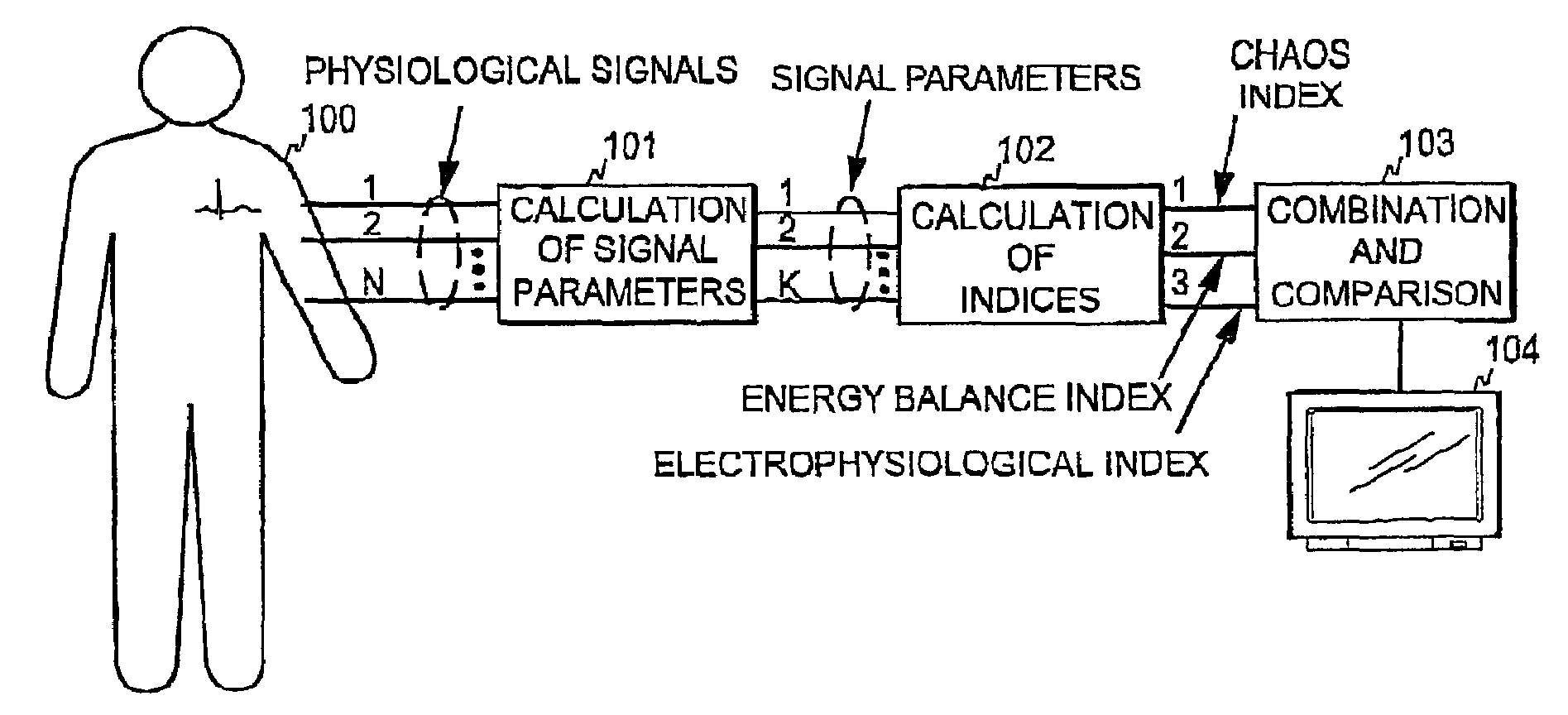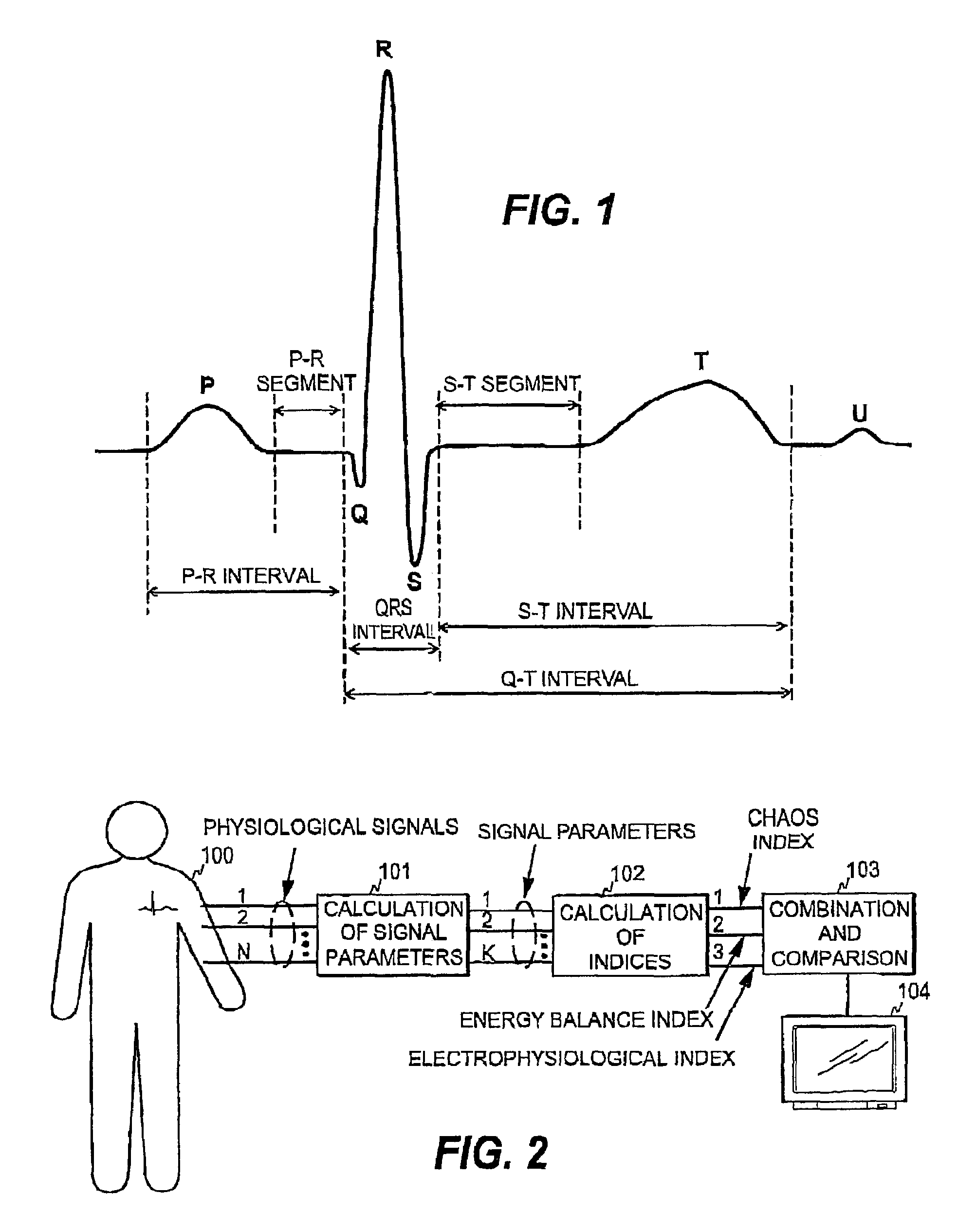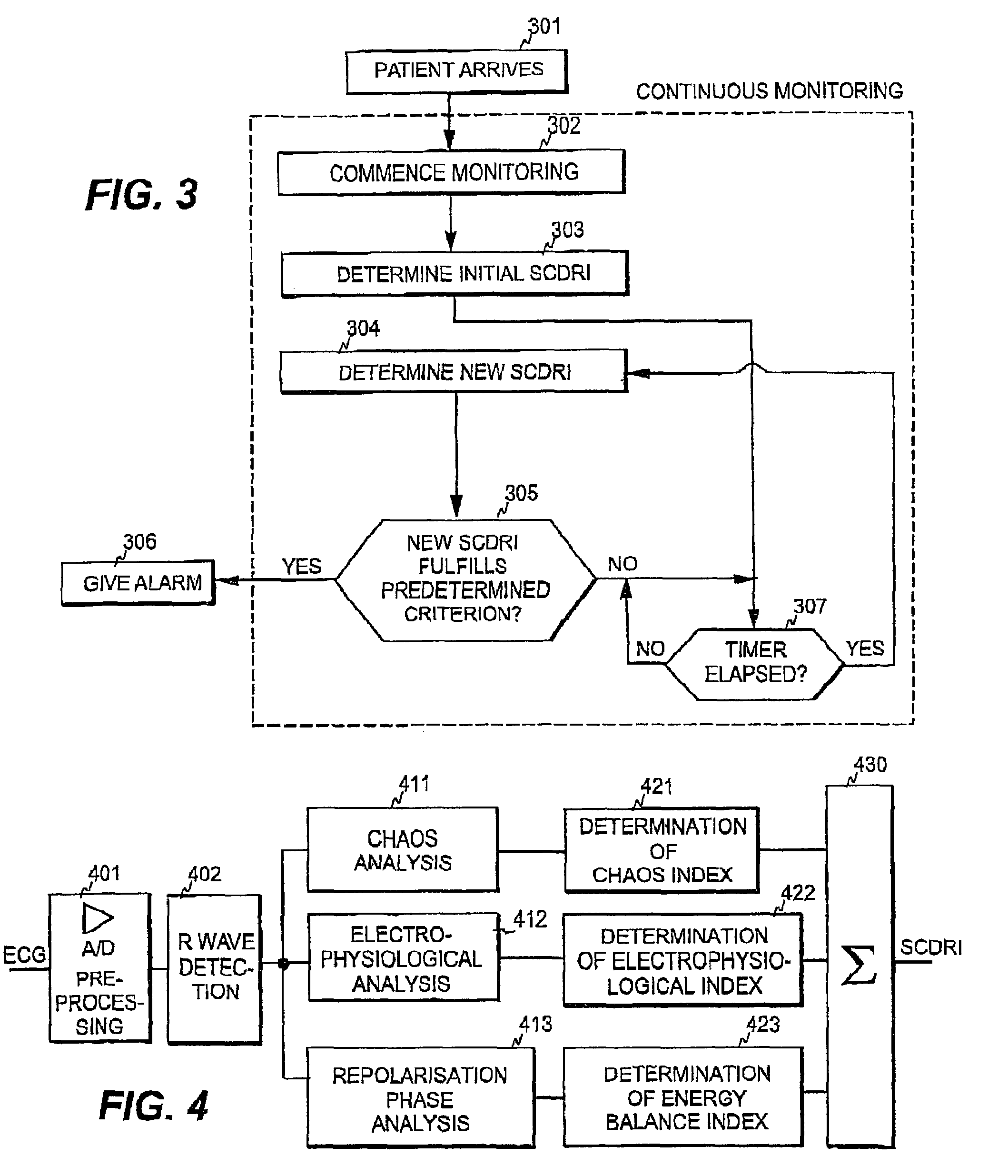Estimation of cardiac death risk
a cardiac death and risk technology, applied in the field of cardiac death risk estimation, can solve the problems of cardiac ischemia and acute infarction, delay in alerting clinical staff, and study the whole, so as to reduce the delay in treatment or resuscitation, improve the survival chances of patients, and reduce irreversible damage
- Summary
- Abstract
- Description
- Claims
- Application Information
AI Technical Summary
Benefits of technology
Problems solved by technology
Method used
Image
Examples
Embodiment Construction
[0039]Below, the invention is disclosed in the context of monitoring a hospitalized patient in acute care.
[0040]FIG. 2 is a logical presentation of the measurement system of the invention. In the system of the invention, N (N=1, 2, 3, . . . ) electrodes and sensors are attached to patient 100, the electrodes and sensors providing a set of physiological signals. This set of signals is supplied to a first processing stage 101 where a set of signal parameters is calculated on the basis of the said signals. It is assumed in the figure that this set includes K signal parameters. The signal parameters are supplied to a second processing stage 102 where three sub-indices are determined based on the signal parameters, the sub-indices being: a chaos index, an energy balance index, and an electrophysiological index.
[0041]The physiological signals and the signal parameters may be divided into three categories in accordance with the sub-indices: the signals and signal parameters utilized to det...
PUM
 Login to View More
Login to View More Abstract
Description
Claims
Application Information
 Login to View More
Login to View More - R&D
- Intellectual Property
- Life Sciences
- Materials
- Tech Scout
- Unparalleled Data Quality
- Higher Quality Content
- 60% Fewer Hallucinations
Browse by: Latest US Patents, China's latest patents, Technical Efficacy Thesaurus, Application Domain, Technology Topic, Popular Technical Reports.
© 2025 PatSnap. All rights reserved.Legal|Privacy policy|Modern Slavery Act Transparency Statement|Sitemap|About US| Contact US: help@patsnap.com



